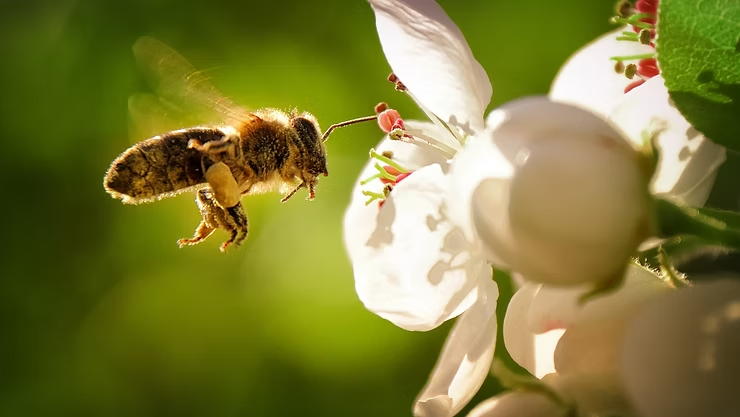Top 10 Facts About Bees
Bees are fascinating creatures with vital roles in ecosystems. From pollination to honey production, they are nature’s tiny superheroes with extraordinary abilities and social complexity.
Key Takeaways
- Bees can recognize human faces.
- The queen bee rules the hive.
- Worker bees perform most of the hive’s tasks.
- Bees have a fascinating life cycle.
- They communicate via waggle dance and pheromones.
Bees: Nature’s Little Superheroes
Despite their small size, bees have incredible abilities:
- Fly at speeds up to 15 mph.
- Possess an acute sense of smell to locate flowers from miles away.
- Navigate using the sun as a compass.
- Visit up to 2,000 flowers in a single day.
The Queen Bee: Ruling the Hive
The queen bee is the mother of all bees in the hive, laying up to 2,000 eggs per day. Her pheromones regulate the colony’s behavior, and she can live up to five years, surrounded by attentive worker bees. If she dies, a new queen is raised from larvae fed royal jelly.
Worker Bees: Busy Bees of the Colony
Worker bees are all female and perform essential tasks like foraging, hive maintenance, and communication through the waggle dance. They have specialized body parts, including pollen baskets, and can visit thousands of flowers daily to sustain the hive.
The Fascinating Life Cycle of Bees
The bee life cycle includes four stages:
- Egg: Laid by the queen and cared for by worker bees.
- Larvae: Fed royal jelly to grow and develop.
- Pupa: Undergoes transformation, developing wings and legs.
- Adult: Emerges ready to assume its role as worker, drone, or queen.
Bee Communication: Waggle Dance and Beyond
Bees communicate through the waggle dance, indicating direction and distance to food sources. They also use pheromones and vibrations for messaging within the hive. This sophisticated communication ensures the colony thrives efficiently.
The Importance of Bees in Pollination
Bees are vital pollinators for fruits, vegetables, and nuts. Their efficiency comes from:
- Visiting multiple flowers and transferring pollen between them.
- Detecting flowers using vibrant colors and scents.
- Using hairy legs and bodies to carry pollen effectively.
Honey: Nature’s Sweet Gift
Honey is a nutritious and medicinal product with antibacterial and antioxidant properties. Bees visit about two million flowers to produce one pound of honey. Honey never spoils and can also be used in skincare for moisturizing and nourishment.
Beekeeping: A Hobby with Benefits
Beekeeping supports bee populations, provides homemade honey, and allows learning about bee behavior and communication. It’s a rewarding way to connect with nature and promote environmental health.
Threats to Bee Populations
Major threats include:
- Habitat loss reducing forage and nesting sites.
- Pesticides like neonicotinoids harming bees’ health.
- Climate change affecting flowering cycles.
- Varroa mites weakening immunity and spreading disease.
Bee Conservation: What Can We Do?
- Plant bee-friendly flowers and herbs.
- Avoid chemical pesticides and choose organic alternatives.
- Support local beekeepers by purchasing honey.
- Educate others about the importance of bees.
Conclusion
Bees are fascinating and essential creatures. Their navigation, communication, and pollination skills sustain ecosystems, and honey production benefits humans. Next time you see a bee, appreciate its remarkable role in nature!
Frequently Asked Questions
- Do bees fly or vibrate? They fly and vibrate to generate heat and communicate.
- Do bumble bees make honey? Yes, but in smaller quantities than honey bees.
- How do bees get their names? Based on species characteristics like appearance or behavior.
- How far do bees fly? Several miles, depending on species.
- Do male honey bees have fathers? Drones have no fathers, but they do have grandfathers.
- What happens if the queen bee is removed? The colony recognizes it within 15 minutes.
- How do bees make honey? By collecting nectar, storing it in their honey stomach, regurgitating, and evaporating it.
- How can we conserve bees? Plant flowers, reduce pesticide use, and provide nesting sites.

